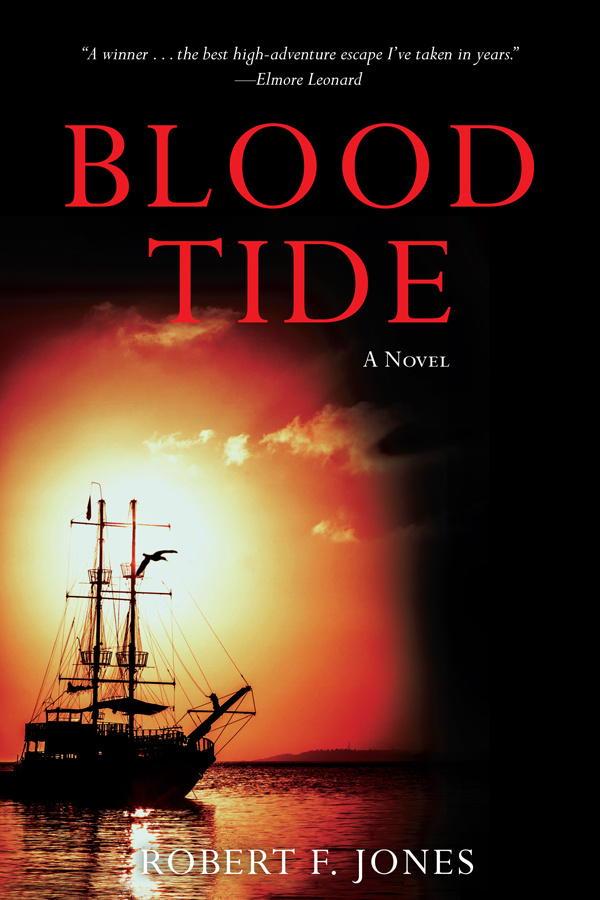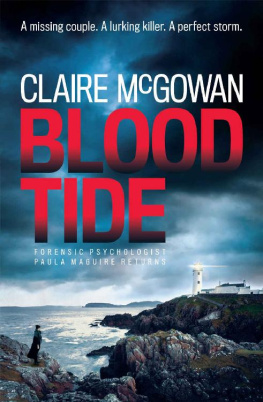Robert Jones - Blood Tide
Here you can read online Robert Jones - Blood Tide full text of the book (entire story) in english for free. Download pdf and epub, get meaning, cover and reviews about this ebook. year: 2014, genre: History. Description of the work, (preface) as well as reviews are available. Best literature library LitArk.com created for fans of good reading and offers a wide selection of genres:
Romance novel
Science fiction
Adventure
Detective
Science
History
Home and family
Prose
Art
Politics
Computer
Non-fiction
Religion
Business
Children
Humor
Choose a favorite category and find really read worthwhile books. Enjoy immersion in the world of imagination, feel the emotions of the characters or learn something new for yourself, make an fascinating discovery.

- Book:Blood Tide
- Author:
- Genre:
- Year:2014
- Rating:3 / 5
- Favourites:Add to favourites
- Your mark:
- 60
- 1
- 2
- 3
- 4
- 5
Blood Tide: summary, description and annotation
We offer to read an annotation, description, summary or preface (depends on what the author of the book "Blood Tide" wrote himself). If you haven't found the necessary information about the book — write in the comments, we will try to find it.
Blood Tide — read online for free the complete book (whole text) full work
Below is the text of the book, divided by pages. System saving the place of the last page read, allows you to conveniently read the book "Blood Tide" online for free, without having to search again every time where you left off. Put a bookmark, and you can go to the page where you finished reading at any time.
Font size:
Interval:
Bookmark:


For Leslie,
who sails deeper seas
On men reprieved by its disdainful mercy, the immortal sea confers in its justice the full privilege of desired unrest.
JOSEPH CONRAD
Excerpt from The Philippine Pilot, vol. IX
15. FLYAWAY ISLANDS
This chapter describes the Islas Efemerales, or Flyaway Islands, marked on some charts as Dampiers Folly. From NE to SW the group includes San Lzaro, Balbal, Moro Armado, and Perniciosa, along with some three dozen islets and atolls that are seasonally inhabited, if at all. Lying in the Sulu Sea midway between Palawan and Mindanao, some seven hundred sea miles southwest of Manila, the group is rarely visited. (See Caution.)
San Lzaro, the largest island, is about twenty-seven miles long, NE to SW, and seventeen miles wide. The interior is mountainous, heavily wooded, and cut with deep ravines known locally as laberintos venenosos for the poisonous snakes, insects, plants, and Negrito headhunters inhabiting them. The highest mountain is an active volcano, Mount Haplit, with an elevation of 2,819 feet. Its smoke plume is often visible at a distance of fifty miles. Close to the coast are many seemingly fertile valleys interspersed with old lava flows and narrow strips of apparently cultivated lowland, from which the mountains rise abruptly. Beaches of red and black sand comprise the leeward shore of the island, supporting lofty, wind-tossed stands of coco palms. Attractive as they appear from the sea, the beaches are infested with hordes of disease-bearing sand fleas (pulgarenas in the local dialect) and should be avoided by visitors.
Balbal is similarly mountainous, with 1,699-foot Cerro Corsario rising in pyramid shape from its center, and thickly forested. Formerly a base for Dyak and Tausuq sea raiders, the island is now reportedly occupied only by a small band of animist indigenes related to the gentle Tasaday of Mindanao. Rare mouse deer, peacock pheasants, giant carnivorous flying squirrels (the balbal for which the island is named), and the small, fierce, V-horned wild buffalo known locally as tamarau are also present in delicate balance with the aborigines. To preserve that balance, Philippine President Ferdinand Marcos in 1978 placed Balbal off limits to visiting vessels. The ban, though rarely enforced, remains in effect.
Moro Armado is a hilly, scrub-grown, boomerang-shaped island twelve miles long by four miles wide. Surrounded by abrupt fringing reefs, its most prominent feature is a complex of salinas, or salt pans, at the S end into which the tide flows. These salinas are diked and controlled by sluice gates to permit the entry, entrapment, and evaporation of seawater, and are mined in rotation for the resulting salt. The labor was performed in the past by indentured mineros, who lived in coral-block huts the size of dog kennels. Currently the task falls to political prisoners and hostages whose plaintive cries and work chants can be heard far offshore, especially on a NE wind.
Perniciosa, flat, corralled, and uncharted, is visited only by snake hunters and malaria researchers. A Japanese submarine refueling depot was located here during World War II but abandoned in 1944 due to disease and guerrilla raids.
The sea bottom surrounding the Flyaways is rugged and rapidly variable. A Dangerous Ground of reefs, shoals, trenches, shifting sandbars, and submarine ledges (called putas in local parlance) girds and interpenetrates the main group, rendering approach hazardous even to the best-equipped vessels.
Wrecks abound.
History. Obscure, violent, mythic, and not yet written.
COLREGS Demarcation Lines. International rules of the road apply.
Vessel Traffic Management. Not applicable.
Anchorages. Variable, dependent upon wind, tide, current, and political developments. A good weather eye and a busy leadsman in the chains afford the best assurance against grounding. All anchors should be buoyed for quick slippage and an anchor watch maintained at all times. (See Caution.)
Tides. Probably semidiurnal on the South China Sea side of the group, diurnal in the Sulu Sea. Tide tables for these waters have not yet been compiled.
Currents. Little known, though a NW current of twelve to twenty knots may set directly through the islands and their outliers, at least during certain months.
Weather. Mild to severe, year around. The outstanding feature of the marine weather is its unpredictability. Trade winds and monsoons are frequently interrupted by cold fronts that reach the islands from as far away as Tibet and Mongolia. Gale-force winds, though unlikely, can drop with great suddenness from seemingly clear skies. These squalls are known locally as vientos azores, or hawk winds, for the swiftness and ferocity of their descent. Seas in the area usually run about ten feet, but have reached forty feet or more on occasion. Waterspouts are common.
Storm-Warning Displays. These are unknown in the Flyaways.
Pilotage. Unreliable. (See Caution.)
Towage. Hazardous. (See Caution.)
Quarantine. Not required. (See Caution.)
Customs. Ruinous. (See Caution.)
Immigration. No passport or visa is required of anyone seeking to enter the Flyaways.
Supplies. Bunker fuel, diesel, and gasoline are rarely available. Most fuel sold to visiting mariners has been purposely diluted with water or spiked with corrosives. Sugar is frequently added to gasoline so as to burn pistons and render visiting vessels inoperable. Fresh meat, fruit, and vegetables can be purchased, along with casks of supposedly fresh water, from local pump boats. A frequent, low-cost offering is the native rum, a potent drink called tuba asesina (see Caution). All such produce should be thoroughly examined, washed, strained, peeled, cooked, or otherwise tested (perhaps on the ships cat) before human consumption. Ice, yeast, and stationery are sometimes available in the bicycle shop above the Carniceria Cabrnes near Love Boat Wharf at Avenida Putissima.
Repairs. The Vela Vieja Sail Loft at Narr Lagoon on Moro Armado is equipped with a deep-throat (thirty-seven-inch) sewing machine. One-Eyed Balabatchi, a shipwright on San Lzaro, does excellent if expensive work in both wood and fiberglass (ask for him at the Millikan Shipping offices opposite the mosque on Dewey Square in Lzaro City). Though all Flyaway Islanders are competent mechanics, requests from visiting mariners for engine repairs are often construed as invitations for sabotage (see Caution).
Communications. Roads between principal ports and towns are poor, unpaved, rutted, and beset by bandits. Bridges over the many streams that drain the higher islands are few, flimsy, poorly maintained, and exorbitant in their toll rates. The islands have no air service. Though steamship lines from Manila, Puerto Princesa, and Zamboanga served the islands in years past, the looting and subsequent sinking of a Hong Kong cruise ship at dockside in Lzaro City in 1978 caused termination of passenger service. Only small, interisland vessels called kumpits now operate in the Flyaways (see Caution). Telephone, telegraph, and radio communications to the outside world have never been available, and probably never will be.
Currency. The monetary unit is hard cash (gold or silver) in any available coinage. No credit cards are accepted. Barter is widespread (see Caution).
Next pageFont size:
Interval:
Bookmark:
Similar books «Blood Tide»
Look at similar books to Blood Tide. We have selected literature similar in name and meaning in the hope of providing readers with more options to find new, interesting, not yet read works.
Discussion, reviews of the book Blood Tide and just readers' own opinions. Leave your comments, write what you think about the work, its meaning or the main characters. Specify what exactly you liked and what you didn't like, and why you think so.











